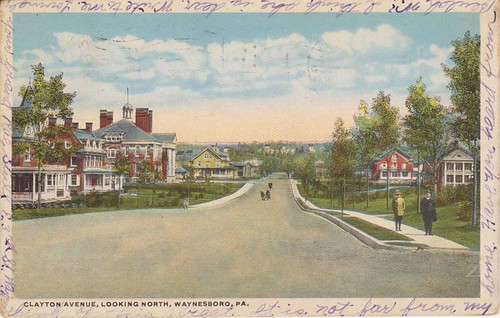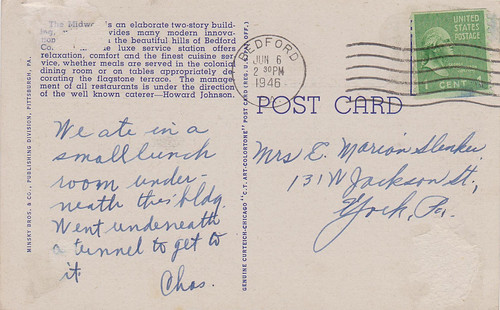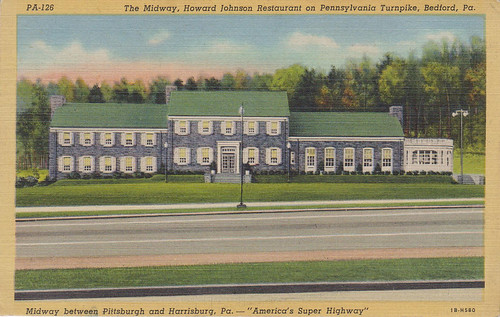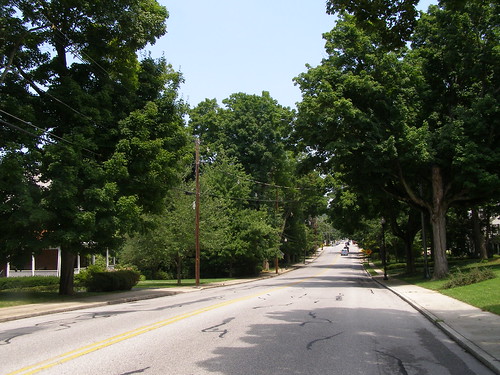Today we have the latest installment of Charlene Dodds's rephotography project, in which she's visiting places shown on old postcards sent to and from members of her family. (In case you missed it, previous installments in this series are available here, here, here, and here.)
Here's the latest from Charlene:
The next stop on my tour of Pennsylvania was Waynesboro, a town General Robert E. Lee passed through after the Battle of Gettysburg. A schoolmate of my great aunt’s had sent her a postcard from Waynesboro over the summer break in 1917. The postcard showed three grand houses along Clayton Avenue. I had no trouble finding the proper street, but I had to drive back and forth several times before I realized that the tiny trees shown in the postcard had grown so much in 95 years that they now largely obscure the houses, one of which you can just barely see peeking through in the photo I took [for all of these images, you can click to enlarge]:

You can get a better view of that house in this shot, although it doesn't duplicate the original postcard perspective.
My next stop was the Bedford rest station on the Pennsylvania Turnpike. This spot was a big hit for my paternal grandfather, who sent many postcards back home to his kids from this place, including a view of a Howard Johnson restaurant known as "the Midway." I discovered that the building shown is on the south side of the roadway. Roadway traffic necessitated a high concrete wall dividing the directional traffic lanes, so a second, near-identical restaurant was built on the north side of the road. That one is still there -- but much like the houses in Waynesboro, it's now largely obscured by trees:


My other grandfather, on my mother's side, also had a connection to the Turnpike. He had been the surveyor for this road many years earlier. My mother -- his daughter -- has regaled me with stories of when she was very small and he would take her along in the dead of night to “shoot the stars” with a sextant, which is how the workers plotted where to lay the roadbeds before GPS. It's fascinating to me that both sides of my family had a link to the Turnpike years before my parents would eventually meet.
That's it from Charlene for this time around. More soon.



No comments:
Post a Comment